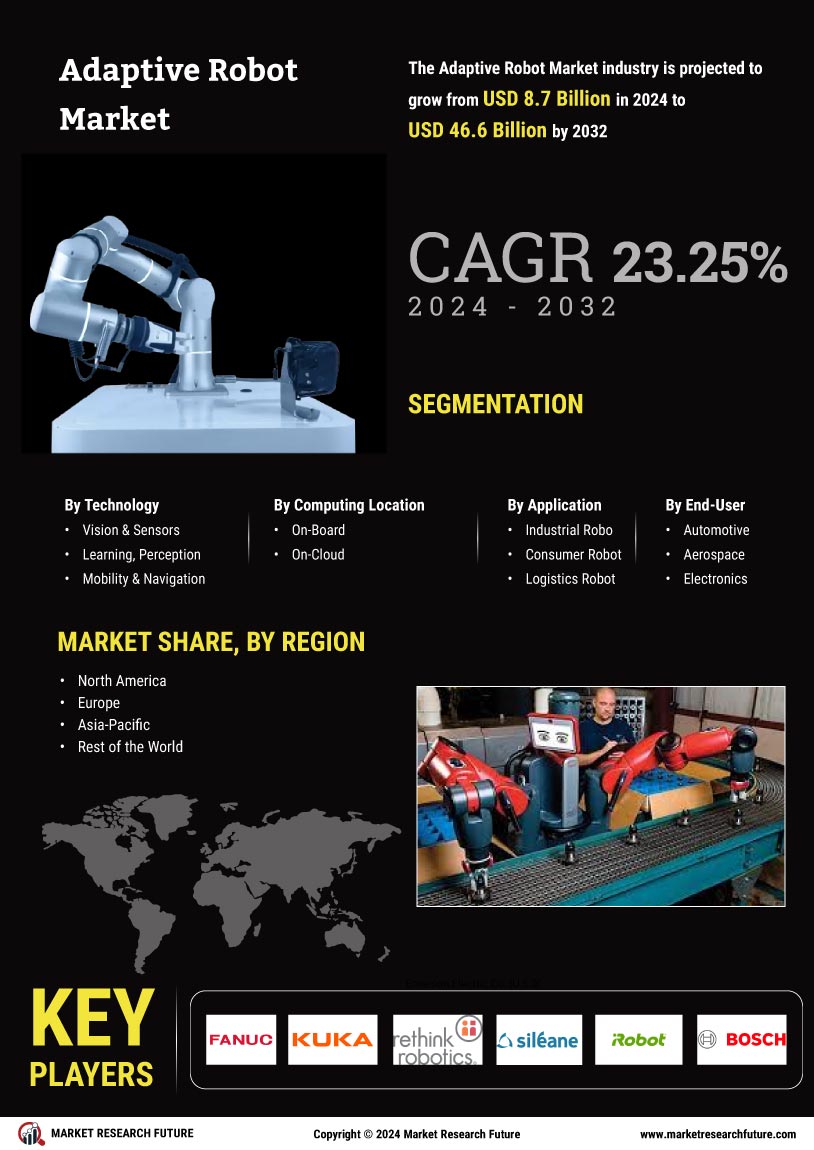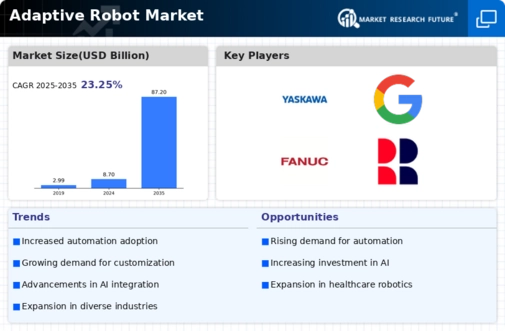Rising Demand for Automation
The Adaptive Robot Market is witnessing a notable increase in demand for automation across various sectors, including logistics, agriculture, and manufacturing. As industries strive for greater efficiency and productivity, the adoption of adaptive robots is becoming more prevalent. For example, in manufacturing, robots are utilized for tasks such as assembly, welding, and quality control, which enhances operational efficiency. Market data indicates that the automation sector is expected to grow at a compound annual growth rate of over 10% in the coming years. This rising demand for automation not only streamlines processes but also reduces labor costs, thereby propelling the growth of the Adaptive Robot Market.
Shift Towards Sustainable Practices
The Adaptive Robot Market is also influenced by a growing shift towards sustainable practices across various sectors. Companies are increasingly recognizing the importance of reducing their environmental footprint, and adaptive robots play a crucial role in achieving these goals. For example, robots can optimize resource usage in agriculture, leading to reduced waste and improved crop yields. Furthermore, in manufacturing, adaptive robots can enhance energy efficiency by streamlining production processes. Market trends indicate that sustainability is becoming a key consideration for businesses, which may drive further investment in adaptive robotics solutions, thereby fostering growth within the Adaptive Robot Market.
Technological Advancements in Robotics
The Adaptive Robot Market is experiencing a surge in technological advancements, particularly in artificial intelligence and machine learning. These innovations enable robots to learn from their environments and adapt to various tasks, enhancing their efficiency and effectiveness. For instance, the integration of AI algorithms allows robots to process vast amounts of data in real-time, making them more responsive to dynamic conditions. According to recent data, the market for AI in robotics is projected to grow significantly, indicating a robust demand for adaptive robots that can perform complex functions autonomously. This trend suggests that as technology continues to evolve, the capabilities of adaptive robots will expand, driving further investment and development within the Adaptive Robot Market.
Growing Need for Enhanced Safety and Efficiency
The Adaptive Robot Market is increasingly driven by the need for enhanced safety and efficiency in various operational environments. Industries such as construction and healthcare are particularly focused on integrating adaptive robots to minimize risks and improve productivity. For instance, robots can perform hazardous tasks, reducing the likelihood of workplace accidents. Additionally, in healthcare, adaptive robots assist in surgeries and patient care, ensuring higher precision and better outcomes. Market analysis suggests that the emphasis on safety and efficiency will continue to propel the adoption of adaptive robots, thereby expanding the Adaptive Robot Market.
Increased Investment in Research and Development
Investment in research and development is a critical driver for the Adaptive Robot Market. Companies and governments are allocating substantial resources to explore new technologies and applications for adaptive robots. This focus on R&D is essential for fostering innovation and improving the capabilities of robots, enabling them to perform more complex tasks. Recent statistics reveal that R&D spending in robotics is projected to reach billions of dollars annually, reflecting a strong commitment to advancing the field. As new technologies emerge, the Adaptive Robot Market is likely to benefit from enhanced product offerings and improved performance, attracting further investment and interest.

















Leave a Comment